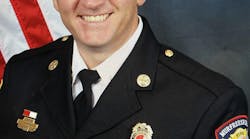The long-awaited restructuring plan for the Department of Homeland Security (DHS) raises more questions than it answers, but there are reasons for "cautious optimism" on the part of the fire-rescue service. There's a lot we don't know and details of the plan announced by Secretary Michael Chertoff will be learned in the coming weeks. However, it appears the U.S. Fire Administration (USFA) may have a more prominent role in helping fire departments prepare to respond to terrorism and other major disasters. Hopefully, the fire service will have more input and influence on decision-making at the department's upper levels.
For the first time in more than 25 years, the Fire Administration no longer is part of the Federal Emergency Management Agency (FEMA). Instead, it stands alone on the organization chart as a separate branch of the Preparedness Directorate, with the USFA administrator reporting directly to the Under Secretary for Preparedness. Other branches within the directorate include Grants & Training, Infrastructure Preparedness, Cyber & Telecommunications, all headed by assistant secretaries, plus the Chief Medical Officer and the director of the national Capital Region, which is considered to be a special target area.
After all these years, it will seem strange that the Fire Administration is on its own and out from under FEMA's jurisdiction. There were good times when FEMA was led by directors who appreciated the fire service, had clout at the White House and strongly supported the fire programs. But there also were dark years when the FEMA director was ineffective and USFA was treated like an unwanted dog.
While it looks like the Fire Administration is secure and where it belongs in the DHS order of battle, there are many questions to be answered. Will the USFA administrator have the power of an assistant secretary's rank or will he still be a notch below? Will the National Fire Academy still come under USFA? Will fire chiefs be considered for policy-making positions in other DHS directorates or the assistant secretary's job in Grants & Training? Will the FIRE Act and SAFER programs be administered by USFA or the Office of State and Local Government Coordination and Preparedness?
An encouraging sign was Secretary Chertoff's statement that his department is an "all hazards" operation, which offers hope that some DHS bureaucrats will finally realize that improving a fire department's response to a wide range of emergencies also strengthens its ability to respond to a terrorist attack. Until now, there has been resistance to the "all hazards" approach within DHS. Chertoff also emphasized that the main focus has to be on defending against the catastrophic attack, which means the money for first responders should go to fire and EMS departments in urban population centers that are the prime targets for terrorists.
The logical way to handle this would be to use the FIRE Act grants to aid smaller departments who need basic equipment and training, while funds appropriated for response to terrorism should go to the larger departments in cities and regions that are most likely to experience an attack. The idea that every state and every village have to get a piece of the anti-terrorism funds makes no sense and presents Congress with a giant pork barrel it can't resist.
Most of the Chertoff restructuring can be accomplished administratively, but some of the appointments and changes will have to go to Congress for approval and anything can happen in the dark of night on Capitol Hill. Last month, for example, the Senate Appropriations Committee, headed by Sen. Judd Gregg (R-NH), without any warning suddenly took $50 million out of the FIRE Act and put it in the SAFER program. Fortunately, Sen. Robert Byrd (D-WV) came up with $50 million from somewhere and put it back in the FIRE Act. This, incidentally, is the same bunch that previously tried to switch FIRE Act funds to other programs and changed the original DHS organization plan so that control of all the money for first responders went to the Office of Domestic Preparedness, which made the cops happy, but has been a source of trouble for firefighters.
The first reaction of fire service leaders to the DHS restructuring plan has been positive, though some important details are not yet known. But they are supporting Chertoff's effort to make drastic changes and there's a sense that he's on the right track. The study is known as the "Second Stage Review" and was ordered by Chertoff last March when he took over from Tom Ridge, the first DHS secretary. It was inevitable that DHS would have problems and suffer from bureaucratic turf wars as dozens of federal agencies and 170,000 employees were hastily combined into a new cabinet-level department. That was only two years ago and Tom Ridge deserves credit for getting DHS up and running; the challenge for Michael Chertoff is to make it work.
Hal Bruno, a Firehouse contributing editor, retired as political director for ABC News in Washington and served almost 40 years as a volunteer firefighter. He is a director of the Chevy Chase, MD, Fire Department and chairman of the National Fallen Firefighters Foundation.





